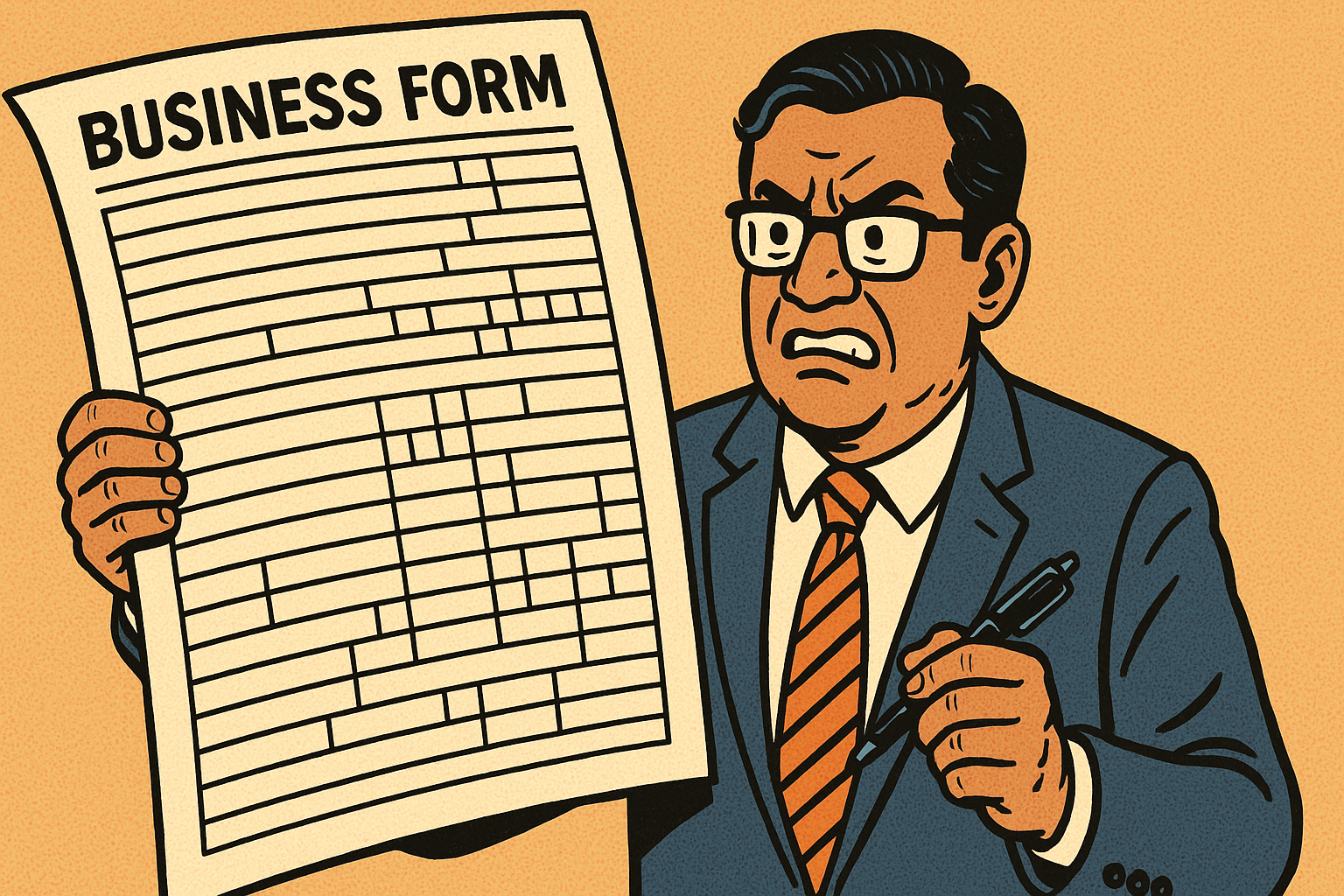New Delhi – In a bold bid to modernize its commercial regulatory structure, the Indian Ministry of Commerce today announced an ambitious initiative to streamline business bureaucracy by introducing larger, more intricately formatted application forms across all government departments. Officials emphasized the move as a “turning point in paperwork efficiencies,” promising entrepreneurs and corporations unprecedented clarity through the new 108-page Universal Business Registration Form (UBRF), set for national rollout by September.
Ministry spokesperson Prakash Mehra, speaking at a press conference, described the project as “a revolution in forms design,” adding that the UBRF would replace no fewer than 37 legacy applications, many of which were still being processed in pre-laminated triplicate. “Our old forms were narrow, piecemeal, and frankly not up to the task. With the UBRF, every business need can be anticipated and classified in one place, with additional continuation sheets as necessary,” he explained to scattered applause from the audience of business leaders.
Critics, however, have raised concerns about possible complications, as many of the UBRF’s requirements range from DNA samples of all stakeholders to a nine-page section on the applicant’s dreams and aspirations, as corroborated by a notary. Proprietors must now complete detailed inventories of their childhood pets and provide certified watercolors of their future offices. Business analyst Dr. Kavita Surya describes the changes as “ambitious,” noting that, under Clause 47b, applicants must map out their supply chains on A0-sized paper without the use of the color blue.
Despite occasional reports of entrepreneurs going missing in the system for weeks at a time, Mehra remains upbeat. “We’ve already seen a reduction in confusion,” he said, gesturing to a wall of stacked documents. “Where once the average applicant would misplace Form 9A-B (Reverse) in favor of Form 12 (Forward Annexure), now they only misfile entire chapters.” The new mandatory Form Acclimatization Workshops have proved popular; last Tuesday’s session attracted 436 participants, three of whom resurfaced only after search parties were dispatched into sub-basement Seminar Room Q.
Early adopters of the UBRF report mixed outcomes. While many highlighted new networking opportunities in the corridor outside Room 502, where residency applications for six-week form-completion periods are processed, others struggled with minor but persistent hurdles. According to a recent government survey, over 84% of applicants successfully filled out more than 40% of Section C (Business Motives: Historical Context), while fewer than a dozen completed the bonus round.
India’s Ministry of Commerce has stated that further improvements are on the horizon: by 2025, all forms are projected to require interactive pop-up narratives and optional moral biographies. Officials remain confident that these adjustments will result in the smoothest business environment yet, aside from occasional encounters with infinite paperwork recursion, which are described as “statistically insignificant, except for the affected parties.”

Leave a Reply